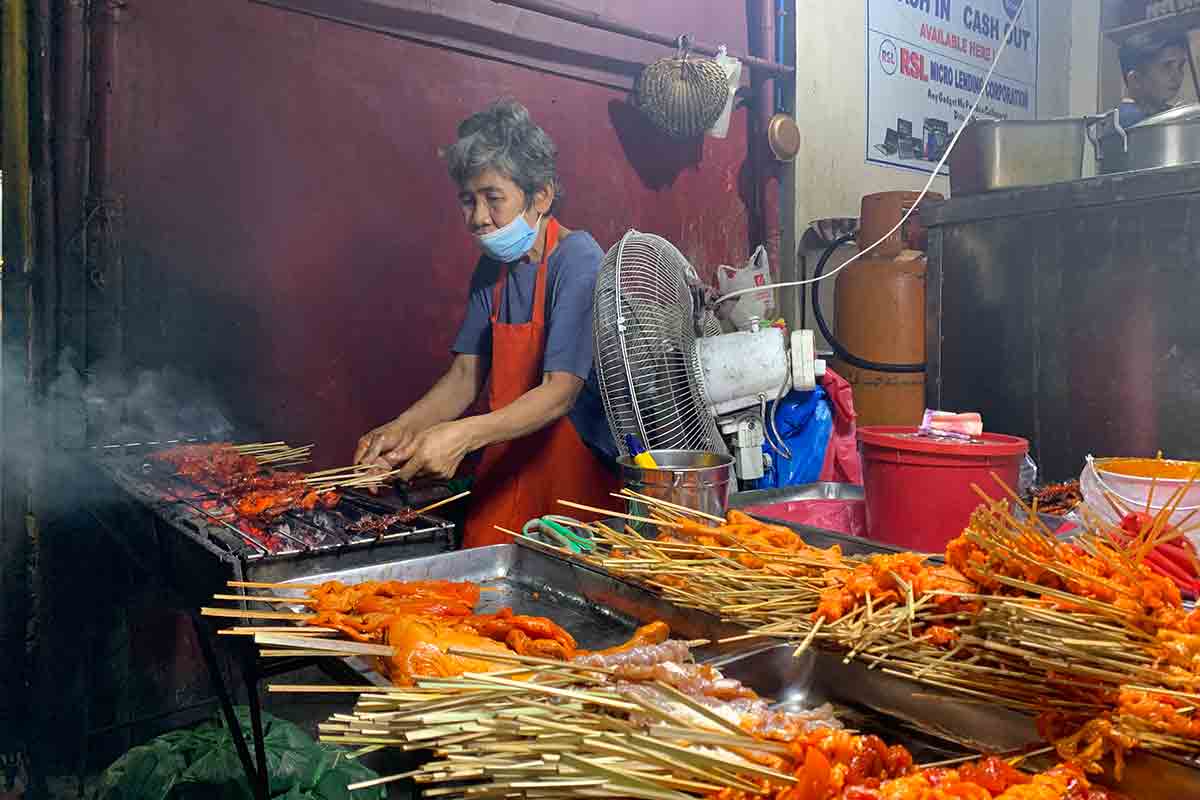
By Mariela Angella Oladive
A different kind of bewitchment awaits in Capiz—beyond the aswang tales.
Known as the “Seafood Capital of the Philippines,” Capiz boasts a wealth of fresh seafood, from juicy oysters to diwal clams, known locally as angel wings. But the province also bears a mysterious reputation, long associated with tales of the aswang, a shape-shifting creature rooted in Philippine folklore.
As someone from Dueñas, which has its own legend in Teniente Gimo, I wasn’t unfamiliar with stories of the aswang. My trip to Capiz revealed the province’s diverse attractions beyond folklore.
Here, the “bewitching” comes through the warmth of the people, rich history, and legends that shape its identity.
In October, we attended the 14th Regional Travel Fair, organized by the Tourism Promotions Board, where business sessions and cultural tours highlighted Capiz’s vibrant heritage.
Curious as ever, some of us asked locals the question on everyone’s mind: “Totoo bang may aswang sa Capiz?” (Is it true there is an aswang in Capiz?) The resounding answer? No.
Dystonia, ‘Asawang Uwang,’ and Propaganda
Local tour guide Airam Miriam explained that the aswang myth might have origins in misunderstood illnesses, such as dystonia—a rare neurological disorder causing involuntary muscle movements, which may have seemed strange and frightening in the past.
Another explanation points to local warriors who went out at night, leaving their wives, known as “asawang uwang” (scolding wives), angry at home. Over time, the term morphed into aswang, fueling the legend.
Miriam noted that Capiz even hosted an “Aswang Festival” in the early 2000s, organized by Dugo Capiznon Inc. to dispel the negative image associated with the aswang. It celebrated local culture, drew tourists, and boosted business, but ultimately ended due to opposition from religious groups.
“Out of respect for the Catholic Church, it was stopped, though many tourists were intrigued by it,” Miriam said.
Licensed regional tour guide Dino Rene Altobano attributed part of the aswang myth’s growth to colonial-era propaganda. He explained that as far back as the 15th century, Spanish colonizers spread rumors linking babaylan (shamanic healers) to aswangs. By demonizing the babaylan, who held influence with their herbal knowledge and indigenous practices, colonizers sought to undermine their authority and suppress resistance.
Altobano also noted a modern twist on the aswang legend, suggesting that today’s “aswang” may not be supernatural creatures but rather those who exploit vulnerable populations through economic inequality, corruption, or systemic injustices.
Although aswang myths once deterred visitors from Capiz, locals today are eager to share their story, welcoming curiosity and questions.
Sacred Sites
Interestingly, Capiz has numerous pilgrimage sites that draw visitors seeking a spiritual experience, contrasting with its association with aswang tales.
One such site is Pan-ay Church, or Santa Monica Parish Church, a centuries-old structure built in 1774. This historic church houses Asia’s largest bell, locally known as the dako nga lingganay or dakung lingganay (big bell), cast from 70 sacks of coins donated by Panay residents. The bell measures 7 feet in diameter and 5 feet in height and rests within the church’s five-story belfry.
Another significant site is the Shrine of the Sacred Heart of Jesus in Roxas City, featuring a towering 132-meter statue of the Healing Jesus. The statue has become a symbol of hope and faith, drawing pilgrims who seek comfort and blessings in its serene surroundings.
Altobano noted that these sites are a source of pride for Capiz residents and represent the province’s strong religious heritage, offering a sense of community and reverence amidst its rich cultural history.
Capiz’s Charms: Food, Festivals, and Filipino Hospitality
Experiencing life in Capiz goes beyond sampling its famous seafood; it is an immersion in rich flavors and warm traditions.
In honor of our loved ones during Undas (All Saints’ Day), one local delicacy worth noting is pusô, a traditional treat unique to Capiz. Unlike pusô in other parts of Visayas and Mindanao, where it is often plain rice, Capiz’s version features sticky rice sweetened with syrup from nipa palm sap.
On our first night, we caught a glimpse of the lively Capiztahan Festival, an event showcasing the heart of Capiz’s culture. The evening was filled with a feast of flavors, lively dances, and music performances that brought back the familiar warmth of a barangay fiesta.
Locals in traditional attire mingled with guests, embodying the renowned Filipino hospitality that makes visitors feel like part of the community.





















